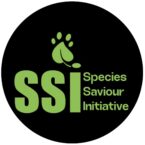Research, Policy & Governance
Protecting nature isn’t just about being on the ground—it’s also about shaping the systems that protect it from above. At Species Saviour Initiative (SSI), we believe real change starts with knowledge, strong policies, and inclusive governance. That’s why we combine scientific research, traditional knowledge, and policy advocacy to create long-term solutions that protect both ecosystems and people.

Ecological Research & Trade Intelligence
We start with data—because we can’t protect what we don’t understand. Our team conducts field-based ecological research to study species behavior, map habitats, and monitor changes in biodiversity. We pay special attention to endangered species and fragile ecosystems, documenting what’s working and what’s not. We also investigate the illegal wildlife and plant trade by collecting intelligence on trade routes, trafficking hotspots, and market dynamics. This information supports smarter interventions and helps track down the networks responsible for environmental crimes. All of our research is shared with communities, government officials, and partners to support informed decisions that lead to real impact.

Policy Advocacy & Customary Law Integration
In Somalia, conservation success depends not just on formal policies but also on the revival of traditional systems that have protected nature for generations. SSI works with elders, custodians of customary law (Xeer), and policymakers to strengthen wildlife protection laws and ensure they reflect both scientific knowledge and traditional ecological wisdom. We advocate for policies that give more power to local communities, respect indigenous governance of natural resources, and close loopholes that allow environmental crimes to flourish. Whether in parliament or village councils, we push for a future where both tradition and policy support a healthy environment.

Legal Reform & Enforcement Support
Laws mean little if they’re not enforced. We work to close legal gaps that allow poachers, traffickers, and environmental offenders to go unpunished. This includes reviewing outdated laws, providing input on new bills, and building bridges between legal institutions and conservation actors. SSI also supports law enforcement and judiciary actors by offering training, data, and expert advice. We believe in environmental justice—where nature has defenders, and violations have consequences. Through better laws and stronger institutions, we’re building a system where nature has a voice.
"Without knowledge, there is no direction—without policy, no protection. We turn data into action, and tradition into governance, to defend nature before it disappears."
Our Partners





